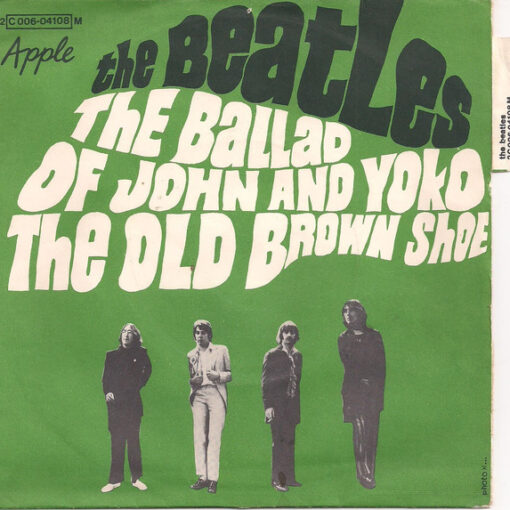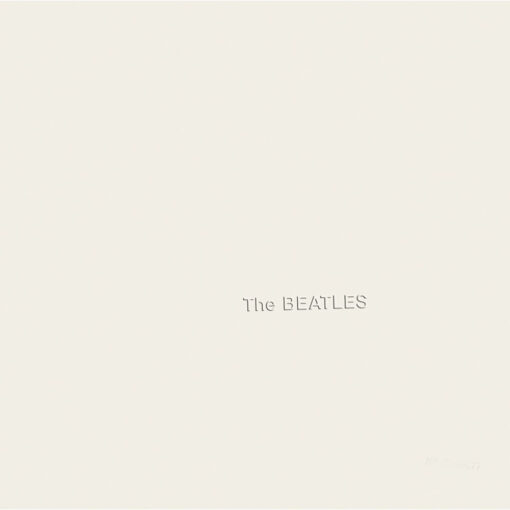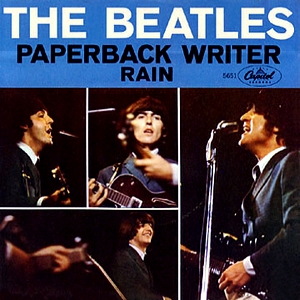- Published on 1968
- Author: Lennon/McCartney
- Track 21 on “The Beatles – White Album“
JOHN 1980: “That was just a sort of nice line that I made into a song. It was about me and Yoko. Everybody seemed to be paranoid except for us two, who were in the glow of love. Everything is clear and open when you’re in love. Everybody was sort of tense around us– you know, ‘What is SHE doing here at the session? Why is she with him?’ All this sort of madness is going on around us because we just happened to want to be together all the time.”
About “Everybody’s Got Something to Hide Except For Me and My Monkey”
“Everybody’s Got Something to Hide Except Me and My Monkey” is a song featured on 1968 double album, commonly known as the “White Album.” The song was written by John Lennon and credited to the Lennon–McCartney songwriting partnership. The inspiration for the lyrics came from the teachings of Maharishi Mahesh Yogi, whom the Beatles studied Transcendental Meditation under in India in early 1968. Many of the song’s lines are direct quotations from the Maharishi’s expressions related to meditation. George Harrison noted that, besides the reference to a monkey, the rest of the lyrics were drawn directly from the Maharishi’s teachings.
John Lennon later explained that the song dealt with the initial disapproval he faced from his bandmates regarding his relationship with Yoko Ono. Lennon’s recollection was that, during that period, he and Ono were deeply in love and impervious to the concerns and tensions surrounding them. Paul McCartney, however, believed that the song had an alternate meaning, interpreting “monkey” as a reference to heroin, a drug associated with the term. He recalled that Lennon used language related to drug use, which the rest of the band wasn’t as familiar with.
Originally titled “Come on, Come on” by Lennon, an early demo of the song was recorded at George Harrison’s Esher home in May 1968. This version featured acoustic guitars and percussion and had a more relaxed style compared to the final version on the White Album. The Beatles recorded the final version during the sessions for the White Album. Ian MacDonald, a music critic, noted that this recording marked Lennon’s return to a more rock-oriented sound after the band’s psychedelic phase. The basic track was worked on at EMI Studios on June 26, but those takes were ultimately discarded in favor of a new recording the following day. This marked the Beatles’ first full group session in a while, as George Harrison had been in California filming a documentary, and Ringo Starr had accompanied him to escape tensions within the band.
Harrison’s time away had led to his renewed commitment to the guitar, which was evident in his contribution of a dynamic lead guitar part to “Everybody’s Got Something to Hide Except Me and My Monkey.” The final recording also included overdubs like handclaps, background shouting, an additional snare drum, and a second bass part by Paul McCartney. The recording was slightly sped up during production, raising the song’s key from D major to E major. Stereo mixing was completed on October 12.
Overall, “Everybody’s Got Something to Hide Except Me and My Monkey” is a significant track in the Beatles’ catalog, representing a shift in their musical style during 1968, and offering insight into John Lennon’s personal life and relationships during that time.
Meaning of “Everybody’s Got Something to Hide Except Me and My Monkey”
The meaning of “Everybody’s Got Something to Hide Except Me and My Monkey” has been the subject of much speculation and interpretation. John Lennon, who wrote the song, offered some insights into its meaning.
In interviews and statements, Lennon explained that the lyrics reflected the sense of isolation he and Yoko Ono felt at the time. He felt that he and Ono were in a state of blissful love, seemingly immune to the concerns or judgments of others. The “monkey” in the title is often considered to be a metaphor for the private and unique relationship between Lennon and Ono. It represented a kind of sanctuary or refuge from the outside world.
However, there are other interpretations. Paul McCartney, for instance, believed that the term “monkey” could be a reference to heroin, a drug that was unfortunately prevalent in the music scene at the time. In this context, the song might be expressing Lennon’s sense of detachment from or indifference to the struggles and vices of others.
The ambiguity of the lyrics and the various interpretations offered by Lennon, McCartney, and other band members contribute to the enduring fascination and mystery surrounding this song. Ultimately, the true meaning might be open to personal interpretation and may vary depending on the listener’s perspective and experiences.
Personnel
- John Lennon – double tracked lead vocal, rhythm guitar, handclaps
- Paul McCartney – backing vocal, bass, second bass, hand bell, chocalho, handclaps
- George Harrison – backing vocal, lead guitar, handclaps
- Ringo Starr – drums, handclaps



